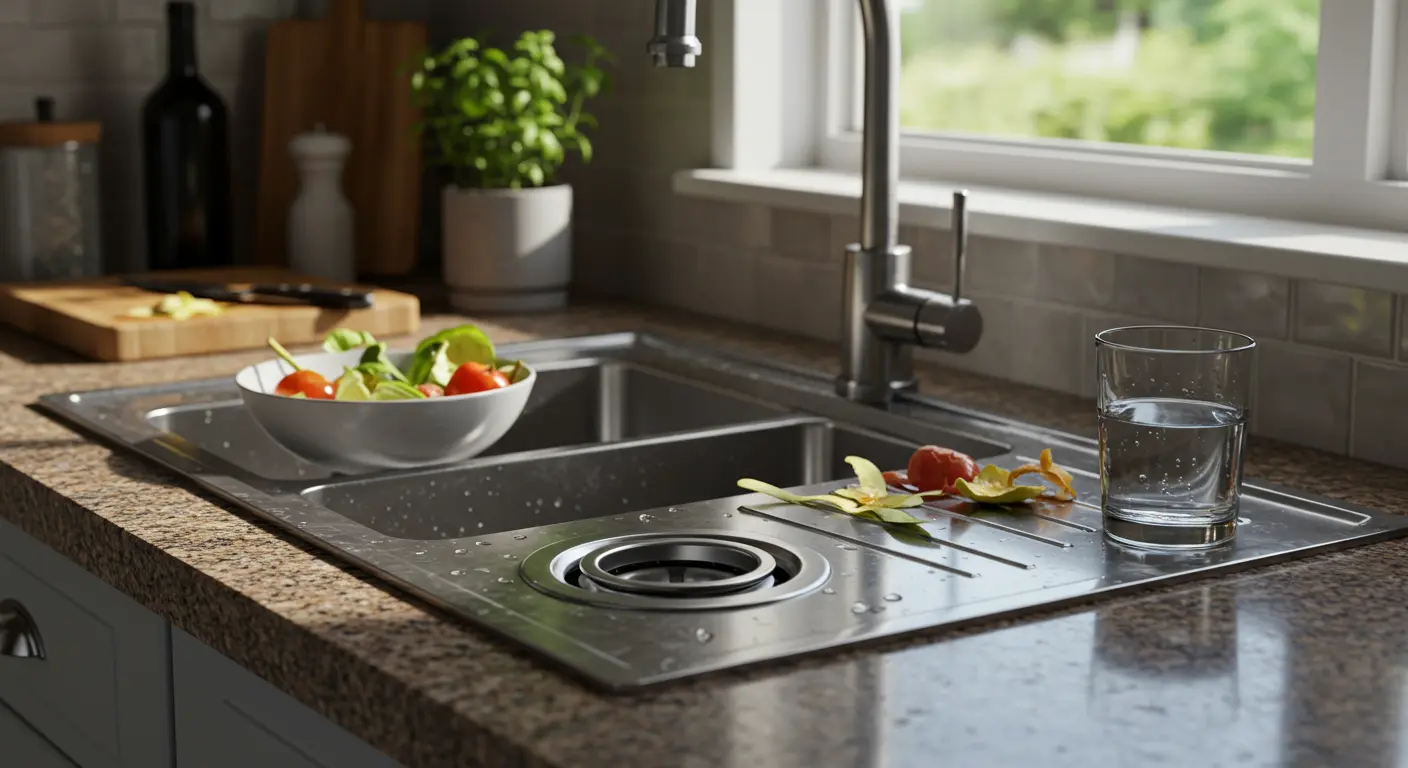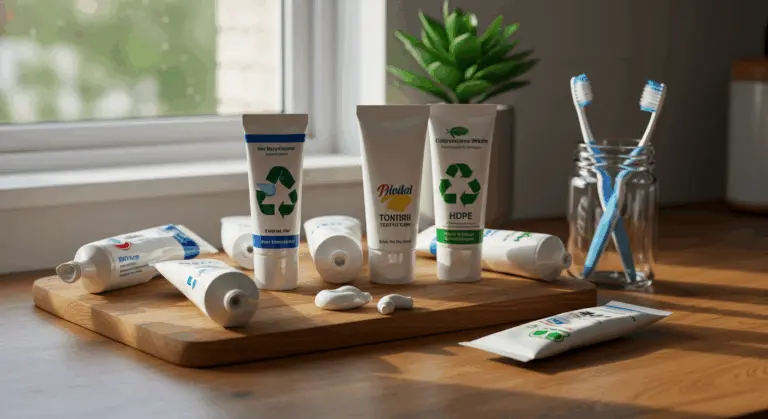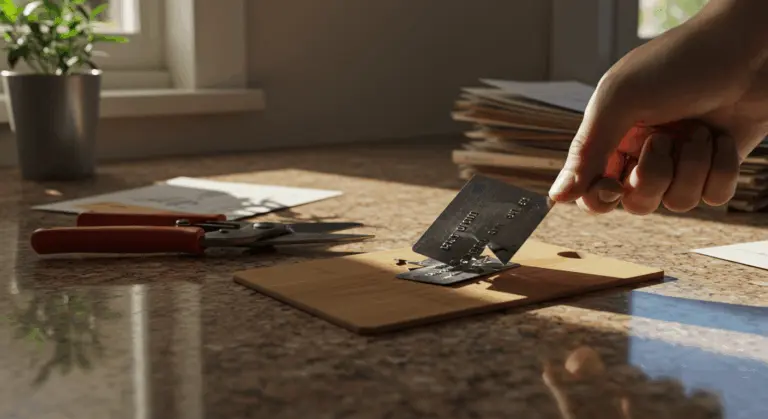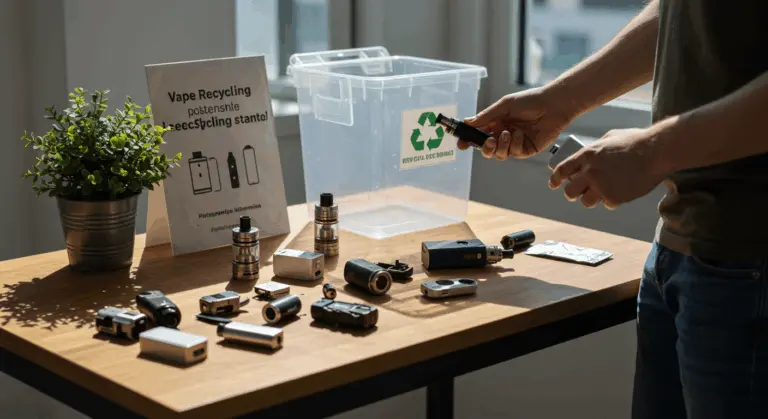Understanding Garbage Disposals – How They Work
Garbage disposals are clever kitchen appliances located under your sink, employing a motor-driven grinding chamber equipped with spinning impellers—not blades, as commonly misconceived. These impellers force food waste against a grinding ring, pulverizing scraps into fine particles that flow safely through your home’s plumbing system.
What makes disposals appealing? Pure convenience. You can scrape plates directly into the sink directly. This eliminates kitchen odors by preventing food from decomposing in trash cans—a particularly welcome benefit during sweltering summer months. Additionally, by grinding food waste into manageable particles, disposals shield your plumbing from the clogs that larger food chunks inevitably cause.
However, proper operation requires significant water flow—roughly 2 gallons per minute—to flush those ground particles through your plumbing. This requirement can inflate a household’s monthly water bill by hundreds of gallons. In drought-stricken regions, this represents both a financial burden and an environmental concern that’s increasingly difficult to justify.
Homes with septic systems face specific problems. The additional food waste can overwhelm the tank’s bacterial balance, causing sludge to accumulate 25-30% faster than normal. This accelerated buildup reduces the tank’s effective capacity and compromises its ability to treat wastewater properly—potentially culminating in costly system failure.
Common Problems Associated with Garbage Disposals
While convenient, garbage disposals create several problems that have prompted restrictions—or outright bans—in numerous locations worldwide. Chief among these concerns is their impact on residential plumbing systems.
Municipal sewer systems face greater challenges from widespread disposal use. The surge of organic matter can overwhelm treatment facilities, particularly in older cities where aging infrastructure already struggles to cope.
Then there’s the noise factor. The grinding mechanism generates considerable racket that can be quite disruptive, especially in open-concept homes or apartments with paper-thin walls. While manufacturers have improved noise reduction, the operational din remains a significant deterrent for many users—particularly those with young children or heightened noise sensitivities.
Clogs and Jams – What Causes Them?
Most garbage disposal clogs and jams stem from user error rather than inherent design flaws. The most common causes are:
-
Fibrous Foods: Items like celery, asparagus, and corn husks can wrap around the grinding mechanism.
-
Starchy Foods: Potato peels, pasta, and rice can form a paste-like substance that clogs pipes.
-
Fats, Oils, and Grease (FOG): These solidify in pipes, creating stubborn blockages that trap other debris.
-
Hard Materials: Bones, fruit pits, and seafood shells can damage or jam the grinding components.
-
Improper Operation: Using insufficient cold water fails to flush waste effectively through the system.
Signs of a Failing Garbage Disposal
A failing garbage disposal rarely dies without warning—it typically broadcasts clear distress signals before complete breakdown:
Addressing these warning signs promptly can mean the difference between a simple repair and complete replacement. Many minor issues respond well to basic maintenance when caught early.
Environmental Concerns with Garbage Disposals
Garbage disposals strain wastewater treatment systems, particularly in regions having aging infrastructure. Many European countries, constrained by older plumbing networks and narrower pipes, simply cannot accommodate the increased volume of food waste that disposals generate.
More concerning is the chain of environmental effects that begins when nutrient-rich food waste enters waterways. These food particles can trigger eutrophication—a process where water bodies become dangerously oversaturated with nutrients.
Some countries have developed effective alternatives to garbage disposals. The UK and France have established comprehensive food waste recycling and composting programs that redirect organic matter away from both landfills and water treatment systems.
Maintenance Tips for Garbage Disposals
Proper use and regular maintenance can help extend your disposal’s operational life. Essential practices include:
-
Use Cold Water: Always run cold water before, during, and for 15–30 seconds after use to solidify grease and flush particles.
-
Feed Waste Gradually: Add food scraps in small amounts rather than all at once to avoid overwhelming the motor.
-
Clean Regularly: Once a week, grind ice cubes to scrub the chamber, followed by citrus peels for a fresh scent. A baking soda and vinegar solution can also be used.
-
Avoid Problematic Items: Do not dispose of fibrous foods (celery), starchy items (potato peels, pasta), hard materials (bones), or any fats, oils, and grease (FOG).
-
Run it Periodically: Briefly run the disposal every few days to prevent rust and keep parts moving.
Best Practices for Using Garbage Disposals
Troubleshooting Common Disposal Issues
Even with meticulous maintenance, garbage disposals can develop issues that need troubleshooting. When your disposal malfunctions, start by identifying the problem.
For a disposal that refuses to start, begin with the basics. Verify it’s properly plugged in and check whether the circuit breaker has tripped. Most modern units feature a reset button on the bottom—press this firmly and attempt operation again.
For jams, requires the hex wrench that came with your disposal. Locate the hex-shaped socket on the unit’s bottom, insert the wrench, and rotate it back and forth to free the impellers.
Persistent clogs extending beyond the disposal into your drain pipes need standard plumbing fixes. A sink-specific plunger can often clear minor blockages, while stubborn clogs might require a plumber’s snake.
Conclusion – Are Garbage Disposals Worth It?
Looking at all aspects of garbage disposals, one question persists: are they genuinely worth installing in your home? The answer depends on your unique circumstances.
From an environmental standpoint, things get more complicated. While disposals can divert organic waste from landfills—potentially reducing methane emissions—they also increase water consumption and burden municipal wastewater treatment facilities.
Your home’s plumbing infrastructure also matters for this decision. Older homes with aging pipes might struggle with the additional strain, while homes relying on septic systems face unique vulnerabilities.
For many households, the best approach is combining careful disposal use with complementary waste management practices. Using the disposal for minor food scraps while composting larger quantities of organic waste creates a balanced approach that maximizes convenience while minimizing environmental impact.
Ultimately, garbage disposals can be valuable additions to many kitchens when operated responsibly and with full awareness of their limitations. By understanding what belongs—and what doesn’t belong—down the drain, maintaining regular upkeep schedules, and supplementing with composting when feasible, you can enjoy the benefits while mitigating the drawbacks that have earned these appliances their contentious reputation.




